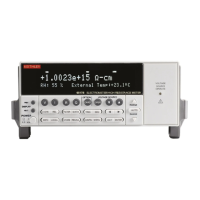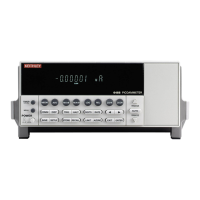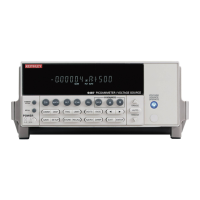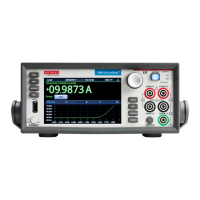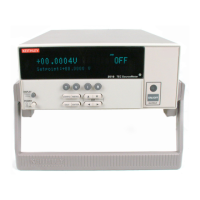F-8 IEEE-488 Bus Overview
Uniline commands
ATN, IFC and REN are asserted only by the controller. SRQ is asserted by an external device.
EOI may be asserted either by the controller or other devices depending on the direction of data
transfer. The following is a description of each command. Each command is sent by setting the
corresponding bus line true.
REN (Remote Enable) — REN is sent to set up instruments on the bus for remote operation.
When REN is true, devices will be removed from the local mode. Depending on device config-
uration, all front panel controls except the LOCAL button (if the device is so equipped) may be
locked out when REN is true. Generally, REN should be sent before attempting to program in-
struments over the bus.
EOI (End or Identify) — EOI is used to positively identify the last byte in a multi-byte trans-
fer sequence, thus allowing data words of various lengths to be transmitted easily.
IFC (Interface Clear) — IFC is used to clear the interface and return all devices to the talker
and listener idle states.
ATN (Attention) — The controller sends ATN while transmitting addresses or multiline com-
mands.
SRQ (Service Request) — SRQ is asserted by a device when it requires service from a con-
troller.
Universal multiline commands
Universal commands are those multiline commands that require no addressing. All devices
equipped to implement such commands will do so simultaneously when the commands are
transmitted. As with all multiline commands, these commands are transmitted with ATN true.
LLO (Local Lockout) — LLO is sent to the instrument to lock out the LOCAL key and all
their front panel controls.
DCL (Device Clear) — DCL is used to return instruments to some default state. Instruments
usually return to their power-up conditions.
SPE (Serial Poll Enable) — SPE is the first step in the serial polling sequence which is used
to determine which device has requested service.
SPD (Serial Poll Disable) — SPD is used by the controller to remove all devices on the bus
from the serial poll mode and is generally the last command in the serial polling sequence.
D
7
D
6
D
5
D
4
X
0
0
0
Command
X
0
0
1
Command
X
0
1
0
Primary
Address
X
0
1
1
Primary
Address
X
1
0
0
Primary
Address
X
1
0
1
Primary
Address
X
1
1
0
X
1
1
1
Bits
D
3
↓
D
2
↓
D
1
↓
D
0
↓
Column→
Row ↓
0 (A) 0 (B) 1 (A) 1 (B) 2 (A) 2 (B) 3 (A) 3(B) 4 (A) 4 (B) 5 (A) 5 (B) 6 (A) 6 (B) 7 (A) 7 (B)
0
0
0
0
0
0
0
0
1
1
1
1
1
1
1
1
0
0
0
0
1
1
1
1
0
0
0
0
1
1
1
1
0
0
1
1
0
0
1
1
0
0
1
1
0
0
1
1
0
1
0
1
0
1
0
1
0
1
0
1
0
1
0
1
0
1
2
3
4
5
6
7
8
9
10
11
12
13
14
15
NUL
SOH
STX
ETX
EOT
ENQ
ACK
BEL
BS
HT
LF
VT
FF
CR
SO
SI
GTL
SDC
PPC*
GET
TCT*
DLE
DC1
DC2
DC3
DC4
NAK
SYN
ETB
CAN
EM
SUB
ESC
FS
GS
RS
US
LLO
DCL
PPU*
SPE
SPD
SP
!
“
#
$
%
&
‘
(
)
•
+
,
-
.
/
0
1
2
3
4
5
6
7
8
9
10
11
12
13
14
15
0
1
2
3
4
5
6
7
8
9
:
;
<
=
>
?
16
17
18
19
20
21
22
23
24
25
26
27
28
29
30
UNL
@
A
B
C
D
E
F
G
H
I
J
K
L
M
N
O
0
1
2
3
4
5
6
7
8
9
10
11
12
13
14
15
P
Q
R
S
T
U
V
W
X
Y
Z
[
\
]
∩
16
17
18
19
20
21
22
23
24
25
26
27
28
29
30
UNT
a
b
c
d
e
f
g
h
i
j
k
l
m
n
o
p
q
r
s
t
u
v
w
x
y
z
{
:
}
≅
DEL
ADDRESSED
COMMAND
GROUP
(ACG)
UNIVERSAL
COMMAND
GROUP
(UCG)
LISTEN
ADDRESS
GROUP
(LAG)
TALK
ADDRESS
GROUP
(TAG)
PRIMARY
COMMAND
GROUP
(PCG)
SECONDARY
COMMAND
GROUP
(SDC)
*PPC (PARALLEL POLL CONFIGURE) PPU (PARALLEL POLL UNCONFIGURE),
and TCT (TAKE CONTROL) not implemented by Model 2182.
Note: D
0
= DIO1 ... D
7
= DIO8; X = Don’t Care.
Figure F-3
Command
codes
6514.
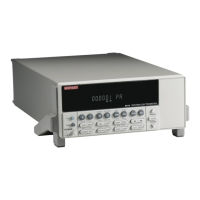
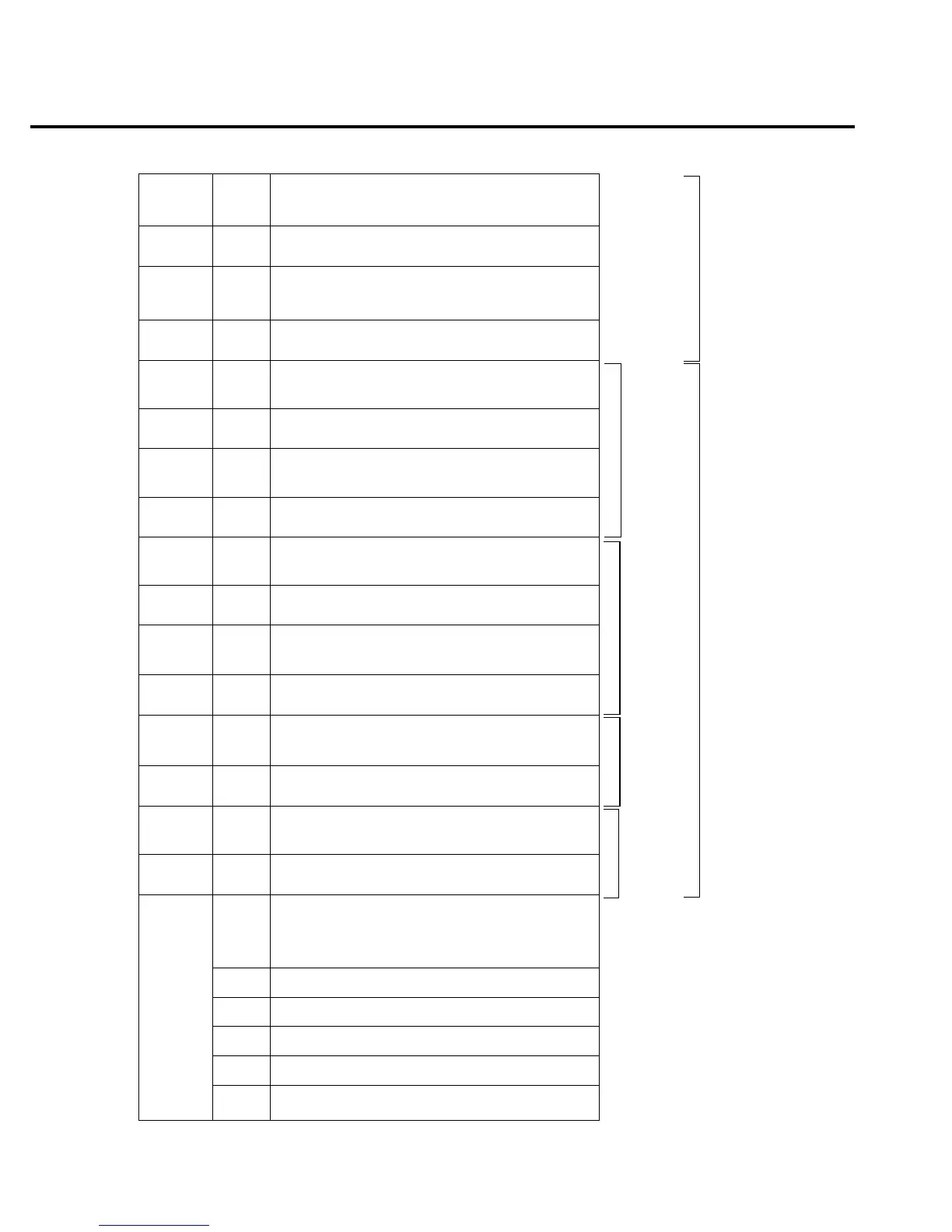